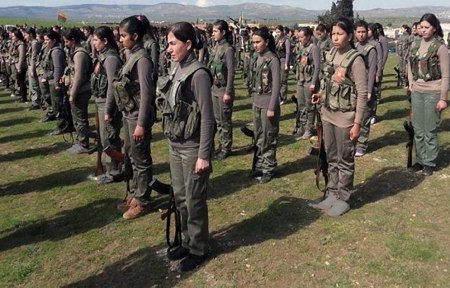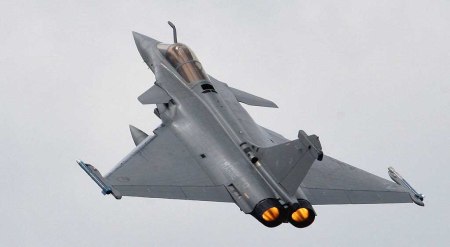Tareq al-Abed As-Safir
The noise of the explosions have ebbed a little. The people returned to repair their homes and get ready for the next day. But the images of the latest Damascus bombing are difficult to forget, and they will continue to haunt many. If that is the case for adults, then how is it for children?
The bitter truth is that a new generation who suffers from psychiatric disorders is emerging. The signs of these disorders have begun to show at schools, at refugee centers and in areas that are still under fire. The bigger tragedy is that there is no quick solution to these issues in light of the continued war and Syria’s dearth of caregivers that can treat those conditions.
When the explosion on Damascus’ Al-Hayat Street happened on February 21, filling the air with smoke and the victims’ screams, a passersby saw a 10-year-old girl sitting on the stone pavement in front of the blast site. Her face and hands were covered with soot and she was quietly playing with the pieces of glass on the ground, ignoring the wounds on her hands. She was clearly in shock and unable to answer questions. The passersby gave up trying to talk to her and left her alone. Even a young doctor gave up trying to help her. Hours later, the girl started crying hysterically as she repeated unintelligible words. Apparently, the person she was with had died but their body was missing.
Another child had a similar experience. He remained clinging to a garden fence near the blast site, screaming in tears as he searched for his mother. She crossed the street to bring something back and never returned.
The explosion scene on February 21 was not the only thing that terrified the children there. For some, the scene brought back memories of previous massacres they had witnessed elsewhere. One child tells of how children were massacred in Karm al-Zeitoun neighborhood in Homs, where he saw people being slaughtered and bodies being burned. The explosion scene awakened another child’s memory of his brother dying in a car bomb in a crowded area in al-Maadamiya, in the Damascus countryside. The child said that he saw pieces of his brother’s body scattered in the street and that he was displaced to al-Mazraa where he stays with his mother.
Some children were apathetic, which reflected their extreme acrimony. One child, who seemed more coherent than others, talked about “a black mushroom cloud” that covered the area. He then adds with a snicker, “I go every day to bring bread from the bakery and I expected what happened in other areas to happen to us … The strength of the explosion is normal compared to what we get in our neighborhood,” which he refuses to identify. He concludes by saying, “I do not fear death.”
The above is a small sample of how Syria’s children are suffering amid the madness of death, blood and bombs. An entire new generation is afflicted with mental disorders, which vary in intensity and reach their peak in the hot spots where children are witnessing various forms of shelling, clashes and executions around the clock. The tragedy is worse when a child kills someone and gets encouraged by applause from those around him who think they are teaching their children strength and resilience.
Long-term medical solutions
Mental shock, according to Sigmund Freud, is analogous to deleting a few words from a letter thus completely changing its meaning. The trauma that Syria’s children are suffering can spawn a generation afflicted with all sorts of mental and behavioral disorders, from hallucinations, narcissism and depression, to being prone to violence. Some cases can be treated with psychological support while others can only be treated by specialized treatment centers. Some try to cope with the problem rather than attempt to remove it from memory because a simple trigger can restore the memory of the event. But one solution is to boost and strengthen children’s self-esteem and confidence.
More than 40 percent of children and adolescents once in their lives suffer from a traumatic event. Many of them recover over time, but that is difficult in Syria, given the present conditions. The symptoms of trauma include fear, depression and anger. Symptoms may appear immediately, after days or weeks, which is what has happened with many of the displaced children who remained coherent until they resettled in a safe place, and then their symptoms suddenly appeared.
Psychiatrist Ibrahim Othman said, “Children who receive psychological support are not out of the danger zone because all the factors of the trauma are still present. First of all, the trauma — such as a bombing, murder or rape — may happen again, whether suffered by the child or witnessed directly or on television.”
Othman, who has been throughout Syria, explains that shelters may cause the trauma to reappear, and in other cases they may be a factor for improvement, depending on the circumstances. It is therefore very important to get the children involved in activities that take their minds away from the traumatic scenes. This, however, does not mean finding an imaginary world, because the child would re-experience the trauma as soon as they return to reality. The doctor said that it is necessary to give children the opportunity to express themselves by engaging in activities such as painting, theater or sports.
Dr. Safwan Abboud said that it is necessary to develop the child’s self-esteem, which is defined as the ability to cope with life’s shocks but not to the point of delusion, which is what happened to many children that Abboud met at refugee centers.
Psychological support in general, and for children in particular, is being provided by a just one entity, the Red Crescent, because international organizations have been unable to enter the refugee centers. The burden is entirely on Syrian NGOs operating in border areas, in camps on the northern border with Turkey, and in al-Zaatari camp in Jordan. According to Abboud, the mission is more difficult in the interior.
The Syrian Red Crescent is active in shelters at schools and in relatively calm areas but many centers work in secrecy and refuse to give details. In general, few trauma cases — rape, witnessing rape or witnessing killings — require specialized centers.
In contrast, psychiatrists are playing a small role because there are few of them and because of the prevailing social culture, which considers visiting a psychiatrist as either shameful or useless. According to figures by the United Nations Children’s Fund (UNICEF), out of the displaced 300,000 children that the organization has on record only 23,000 received psychological support. Reports by the UN do not provide a clear picture on how much children have been affected by the violence. Numbers by Syrian activists show that more than 6,000 children have been killed and 2,000 kidnapped. And these are only the documented cases.
In summary, some may consider the issue of mental disorder to be a small detail amid the madness of war. Others may consider raising the issue a “humanitarian luxury” that ignores the fact that the entire country is being destroyed, not just children. But that issue remains special because the children are Syria’s future.































